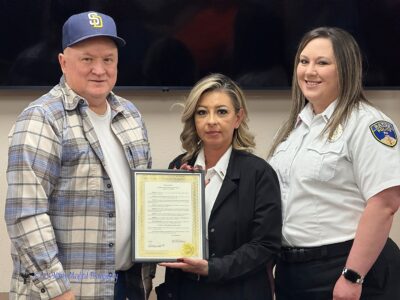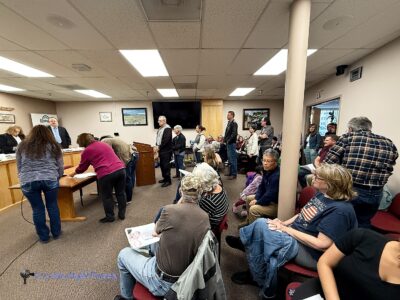by Nancy Christofferson STONEWALL — The valley of the stone wall is aptly named, but it easily could have been named Russellville or Storzburgh or perhaps Valle de Purgatorio. In fact, in the early 1870s, it was known as St. John’s Valley, or Valle de San Juan, in honor of the man credited with being the first settler there, Juan Gutierrez. Another pioneer was named James Stoner. Local lore says the area is actually named for him, as Stoner’s Wall. Most of us presume it is named Stonewall for a more obvious reason, namely the Dakota wall.
STONEWALL — The valley of the stone wall is aptly named, but it easily could have been named Russellville or Storzburgh or perhaps Valle de Purgatorio. In fact, in the early 1870s, it was known as St. John’s Valley, or Valle de San Juan, in honor of the man credited with being the first settler there, Juan Gutierrez. Another pioneer was named James Stoner. Local lore says the area is actually named for him, as Stoner’s Wall. Most of us presume it is named Stonewall for a more obvious reason, namely the Dakota wall.
When these first settlers arrived in this beautiful place, it was still very much the land of the Ute. A major Indian trail passed through, and the early residents were paid regular visits by Utes of all sizes and intents. It is said the old Ute trail is now the route of Highway 12.
John Weston was said to be the first Anglo to claim land along the upper Purgatory, but in late 1871 the Richard Russell family found their own personal paradise about 10 miles upriver. The Russells filed a claim for acreage above the great stone wall, where they had found abundant water, fertile meadows and forests of trees suitable both for building and fuel. Shortly after their arrival their good friends from New Mexico, the George Storz family, built their own home a few miles farther north.
The Russells were to rue their choice of a home site. The north side of the wall, they discovered, was noticeably colder in the winter than the south side and their first months were spent huddled around their large fireplace. The benefits of the land, however, outweighed the discomforts. Soon the family had not only a comfortable log house but a comfortable living. They were running large herds of cattle, selling timber and freighting goods out of Trinidad to the growing number of neighbors. Richard also operated a sawmill.
On August 6, 1878 – 137 years ago – the Stonewall post office was opened to serve a now sizeable population of farmers and ranchers. Richard Russell was postmaster, and operated a store to supply the neighbors and travelers. A school was built. In 1876, when a young boy was killed in a timbering accident, a cemetery was started on a flat spot atop a hill surrounded by pines – a beautiful and peaceful resting place. By the early 1880s the people of the valley were enjoying a literary society as well as musicales and dances, Sunday school and church services.
All was not perfect in this little piece of paradise, however.
In 1888, the settlers of the valley were notified their land claims were not valid and they must vacate their homes and fields. The owner of the huge Maxwell Grant was claiming their land as a part of his huge holdings.
The Maxwell Grant had been made by Governor Manuel Armijo to Carlos or Charles Beaubien, a Canadian immigrant, and Don Guadalupe Miranda in 1841. It was said to be the largest grant made by Spain or Mexico that was confirmed by the U.S. Congress. It contained more than 1,700,000 acres. While it was then in Nuevo Mexico, after 1861 the land straddled the New Mexico-Colorado border. The farthest northern section, it was stated in 1888, included the Stonewall Valley.
Miranda had died, and Beaubien became sole owner of the grant. The land had endured through long and careful scrutiny by U.S. officials and survived in its entirety. Nevertheless, Beaubien sold this huge chunk of property to his son-in-law, Lucien Maxwell, for the paltry sum of $2,500.
Maxwell’s claim to the land situated in Colorado was verified, and the accepted northern property line was set along the Purgatory River.
Meanwhile, of course, the settlers, many of whom had official homestead papers in hand, determined they would hold on to their lands against what they considered to be a land grab. Maxwell sent “deputies” to inform the settlers they were not welcome and would be forcibly removed if necessary.
Richard Russell became spokesman for the settlers. He went to meet with Maxwell’s men in the little hotel at Stonewall. Soon, the assembly of settlers outside heard shots, and saw the Maxwell men flee. Richard had been fatally wounded, and died a few days later. According to Richard’s wife, Marian, some 500 armed men escorted him to his resting place in the pines. Marian was 43 when her husband was killed, and had six children to raise on her own. With the help of her grown offspring, she and they survived and thrived, and their descendents can still be found in Las Animas, Huerfano and Pueblo counties.
The settlers hung on, and those north of the Purgatory or east or west of the other grant boundaries were allowed to stay. Some of them are still there.
Around the turn of the 20th century, the Colorado portion of the Maxwell grant was sold to Colorado Fuel and Iron Company. The first metamorphosis of the Stonewall Valley’s settlements as ranching communities, began to change.
CF&I built up numerous camps around their coal mines, coke ovens, tie, prop and timbering operations and other properties on the former grant. The people of the Stonewall country took full advantage of the schools and stores, the increased markets and the railroad tracks that had been added to their peaceful valley.
In 1885, Stonewall was listed in a tour guide as being home to some 250 residents, most of whom were ranchers or farmers. “Cattle and sheep, goats and babies, Mexicans and Americans, possess the country, together with black tail deer, elk, bear, and wild turkeys and trout in all the streams in abundance.” Stonewall was located on two mail “roads” so had service from La Veta as well as Trinidad. For most of the year, the mail was carried on horseback, but in winter the postman often was forced to use skis on the route to La Veta.
Even as the tensions escalated in the “Stonewall War”, vacationers were taking advantage of the natural resources of the valley. In early August 1888, a party from the Rouse coal camp rode their horses across “the regular mountain trail which is only wide enough for a horse or a person to walk and up a very steep grade” as it wound through the trees and boulders. They arrived at a ranch near “the Stone Wall” where they pitched camp and went fishing.
Stonewall was home to the Colorado Fuel and Iron Company’s youth retreat, Camp of the Whispering Pines, beginning in the mid-1910s. After the camp closed to young people, the CF&I offered its lodge for high country relaxation, hunting and fishing opportunities and clean air to vacationing company officials for many years before selling.
The widowed Marian Russell watched from her Stonewall home the various activities of the settlers, tourists, the coal miners, cattle raisers, loggers and others for nearly another half century after Richard died. She saw the old trail up the valley from Trinidad become Highway 12. She arrived in a horse drawn wagon and died of injuries received in a car accident in 1936 at the age of nearly 92.

The Stonewall Valley
More from NewsMore posts in News »




